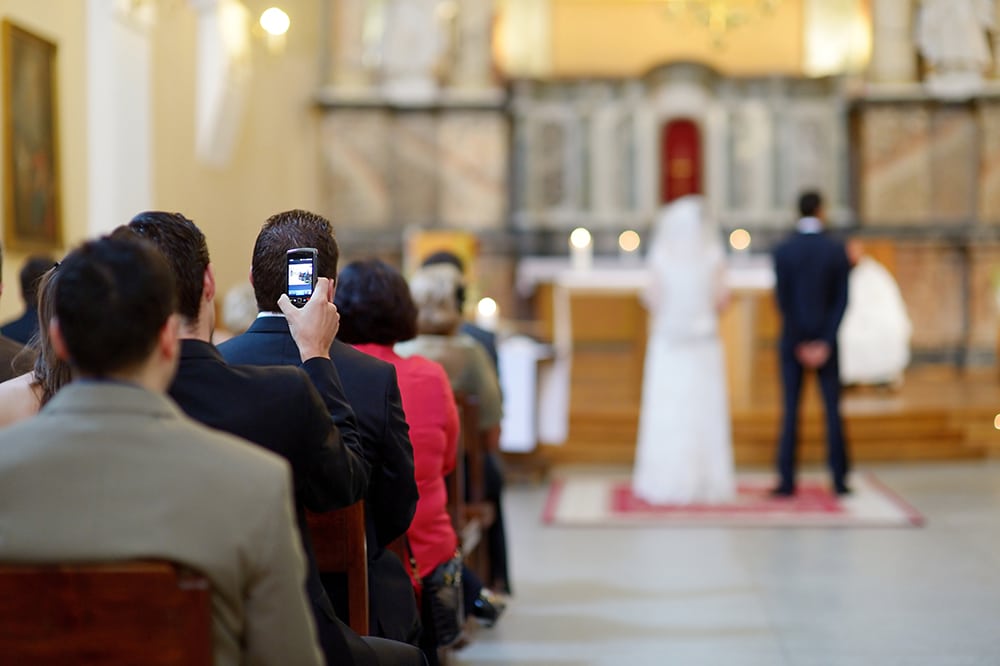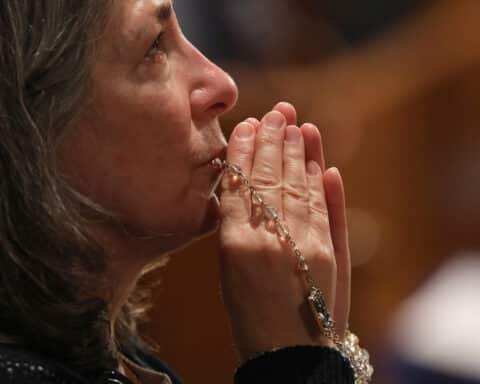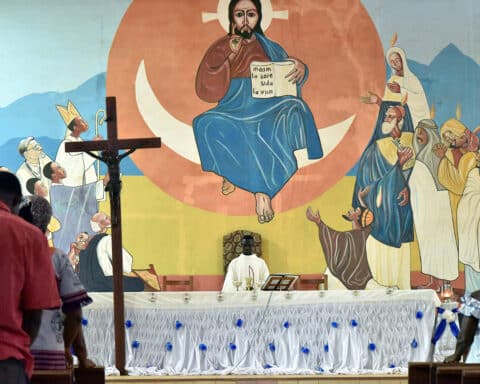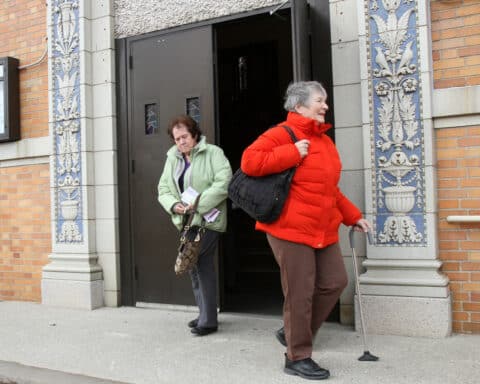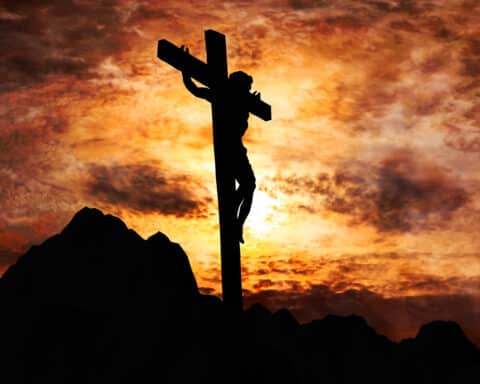
— Samantha Gallio, via email
Answer: It would seem that your parish did arrange for a photographer to supply a record of your child’s first holy Communion. That’s an important component here since there is some value in recording key events in children’s lives. Many parishes, however, have sought to place limits on widespread photography at Mass. It is very distracting to all involved. The children are distracted as are other parishioners. Also distracted are the photographers. Instead of praying and giving thanks and due worship to God at such an important moment, they are focused on trying to get the perfect angle and shot. Sometimes there are also conflicts between the many family members trying to get in position for the picture, etc.
Weddings are also a big problem with as many as a hundred cellphones raised as the bride makes her way down the aisle. At some point, worship is abandoned and the focus becomes wholly on the human aspects of what is taking place. Most often, I must request everyone to put away their phones and allow the hired photographers to do their work. Prayers are ultimately more valuable for the couple than a blurry and crooked cellphone picture.
With the cheap (almost free) capacity to take hundreds of pictures, we are often tempted to focus too much on this. Many of us who are older never got pictures of such moments. I have no pictures of my first holy Communion, confirmation or graduation. Despite this, we are OK and do not feel deprived. Things in those days were different. Film was expensive, indoor photography was often more difficult and required bright flashes, and expectations of lots of pictures did not exist.
Today, parishes do well to provide professional photographers for key events in the lives of parishioners. Video, too, has become a common expectation. Professionals can often bring a discrete presence and produce good quality records of religious milestones. The goal is to meet people’s needs without marring the purpose of the liturgy and sacred attentiveness that is due. Our essential task in the holy liturgy is the worship of God. Precious though they are, pictures of the reception of sacraments are not nearly as important as the actual reception of them in a state of grace, undisturbed by secondary things.
Perhaps your pastor and staff could have done a better job explaining all this, but they are not wrong to limit picture taking.
Who did Jesus rebuke?
Question: Why does Jesus tell Mary Magdalene not to touch him but allows Thomas to do so? It seems unfair.
— Name, location withheld
Answer: The Greek words are different in terms of Mary Magdalene and Thomas. When Jesus speaks to Mary he uses the Greek verb haptomai, which means to cling to or lay hold of. Hence, he is asking her not to go on clinging to him. This is because he wants to send her on a mission to the apostles. Some older translations rendered his request as, “Do not touch me.” Haptomai can mean “to touch,” but more often it signifies a clinging or extended touching. It is unlikely that the Lord said to her in a brusque manner, “Don’t touch me.”
With Thomas, the Lord uses a different verb: ballo. In its strongest sense, it means to throw or cast; in a weaker sense, it means to put or place something. It is unclear whether Thomas went through with this or just fell to his knees. Jesus seems to be using the invitation as a mild rebuke of Thomas, who refused to believe the testimony of the others that he had risen. Hence, he may have intended the stronger meaning, as if to say, “OK, Thomas, cast your hand right over here to my side … hurl it if you will and no longer be unbelieving.” Hence, though some see Mary as being rebuked, she was honored with a mission. Thomas, however, whom many see as getting special treatment in comparison to Mary Magdalene, actually is rebuked, even if mildly.
Msgr. Charles Pope is the pastor of Holy Comforter-St. Cyprian in Washington, D.C., and writes for the Archdiocese of Washington, D.C. at blog.adw.org. Send questions to msgrpope@osv.com.

